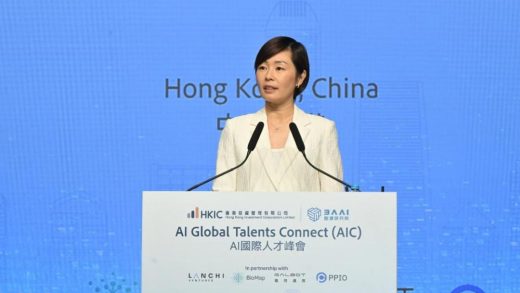I. Industry Risk Analysis
(1) Policy Risk
During the policy formulation stage, entrepreneurs in the optical fiber raw material industry face the risk of sudden upgrades in environmental protection standards. For example, the “Action Plan for New Pollutant Control” may require the full replacement of fluorine – containing coating materials. During the policy implementation stage, the General Administration of Customs has strengthened the export control of rare earths, which may lead to difficulties in purchasing key raw materials for optical fiber preforms (such as high – purity germanium tetrachloride). During the policy adjustment stage, the dynamic revision of the “List of Key Materials Facing Bottlenecks” by the Ministry of Industry and Information Technology may result in the subversive replacement of technical routes. Entrepreneurs need to dynamically track the revision trends of the “National Key Materials Catalog”, pre – layout low – fluorine coating technologies, and establish a reserve library of alternative technologies for rare earth raw materials to hedge against policy – related risks.
(2) Economic Risk
From the perspective of the economic cycle fluctuation theory, the optical fiber raw material industry is currently facing double squeezes on the demand side and the cost side. The slowdown of economic growth, combined with the phased saturation of 5G base station construction, has led to a contraction in the capital expenditure of downstream optical fiber manufacturers. As a result, the order volume has cyclically declined through the industrial chain. The prices of core chemical materials such as high – purity silicon tetrachloride in the upstream have increased by 30% compared with the pre – pandemic level due to energy price fluctuations and geopolitical influences. However, the serious product homogenization has led to weak bargaining power. Under the resonance of the inventory cycle and the capital expenditure cycle, the turnover efficiency of the industry’s cash flow has decreased year – on – year. Small and medium – sized start – up enterprises are facing both the collapse of gross profit margins caused by short – term price wars and the risk of financing cut – off due to long R & D cycles.
(3) Social Risk
The current optical fiber raw material industry is facing social risks caused by inter – generational consumption differences. The young consumer group tends to follow the concept of green and low – carbon, requiring the production end to reduce energy consumption and environmental protection costs, which forces enterprises to transform traditional processes. However, the technology investment and short – term benefits are seriously misaligned. The growth rate of the traditional infrastructure market dominated by the middle – aged and elderly is slowing down, while the demand for ultra – high – speed networks in the new – generation consumer market has not yet reached a large scale. The inter – generational demand gap has led to a mismatch between production capacity and the market. At the same time, new – generation investors pay more attention to ESG indicators. The historical environmental pollution problems in the industry have increased the difficulty of financing, resulting in a generational exclusion effect of capital.
(4) Legal Risk
Entrepreneurs in the optical fiber raw material industry face risks such as environmental protection penalties (stricter standards for chemical waste treatment), patent infringement (high – incidence of patent litigation for core optical fiber preform technologies), contract disputes (frequent disputes over cross – border raw material procurement terms), lack of qualifications (increased difficulty in obtaining the special optical fiber production license from the Ministry of Industry and Information Technology), and monopoly disputes (tighter supervision of price alliances among upstream high – purity quartz sand suppliers). They need to establish a compliance review mechanism to deal with multi – dimensional legal challenges.
II. Entrepreneurship Guide
(1) Suggestions on Entrepreneurial Opportunities
Currently, entrepreneurial opportunities in the optical fiber raw material industry are concentrated in the research and development of high – performance, specialized, and environmentally friendly materials, with a focus on niche scenarios such as 5G base stations, submarine optical cables, and laser medical applications. Entrepreneurs can cooperate with scientific research institutions to develop import – substitute products such as low – loss optical fiber preforms and radiation – resistant optical fiber coatings; develop ultra – low attenuation optical fiber materials according to the upgrading needs of data centers; layout green processes such as recyclable quartz sleeves and bio – based coatings to reduce energy consumption; take advantage of the regional industrial chain agglomeration (such as the Optics Valley in Wuhan and the optical fiber industrial cluster in the Yangtze River Delta) to integrate resources from optical fiber drawing equipment manufacturers and optical module manufacturers and provide customized material solutions. At the same time, they should pay attention to the gap in the local production of optical cable infrastructure materials in emerging markets such as Southeast Asia.
(2) Suggestions on Entrepreneurial Resources
Entrepreneurs in the optical fiber raw material industry should prioritize the integration of core technology resources, cooperate with scientific research institutes to overcome the purification process of high – purity materials, sign long – term supply agreements with overseas quartz sand mining enterprises to ensure the stability of raw materials, obtain equipment purchase subsidies through local government support policies for new material industries, keep abreast of technical standards by joining optoelectronic industry alliances, establish joint laboratories with leading optical cable manufacturers to accelerate product verification. At the same time, they should introduce supply chain management talents with a background in the chemical industry, build a flexible production system to meet customers’ customized needs, and optimize the heavy – asset investment structure through industrial funds and government special bonds.
(3) Suggestions on Entrepreneurial Teams
Focus on the complementarity of core technologies and industrial experience. Prioritize recruiting experts in optoelectronic communication material research and development (who master core processes such as optical fiber preforms and coating materials) and members with more than ten years of experience in optoelectronic material supply chain management (who are familiar with the global procurement of high – purity raw materials and the optimization of production processes). At the same time, allocate analysts familiar with the market demand of 5G infrastructure/data centers (who can accurately connect with the procurement systems of operators and equipment manufacturers). It is recommended to adopt a dual – core structure of “technical partners + operational partners”. The technical team should include core R & D personnel with at least 3 patents related to optical fiber materials, and the operational team should have experience in international trade of bulk chemical raw materials. Implement a dynamic equity distribution mechanism, reserve an option pool of 15% – 20% to bind key process engineers, and introduce industry consultants with a background as senior executives of optical cable production enterprises (in a part – time form) to make up for the lack of experience in production process implementation. Establish a monthly joint technical discussion mechanism with downstream optical cable manufacturers.
(4) Suggestions on Entrepreneurial Risks
Entrepreneurs in the optical fiber raw material industry should first lock in the risk of price fluctuations of key raw materials, hedge against cost risks through futures hedging or signing long – term supply agreements; focus on core links such as high – purity quartz materials to build technical barriers, and cooperate with scientific research institutions such as the Chinese Academy of Sciences to develop purification process patents; simultaneously layout three application scenarios of 5G base stations, data centers, and submarine optical cables to disperse the risk of single – market fluctuations; closely monitor the trends of industrial policies of the Ministry of Industry and Information Technology and timely adjust production capacity to key new infrastructure project areas; establish a full – chain sample testing system from “upstream raw materials – melting and processing – customer verification” to ensure that the product yield rate is stably above 99.995%.





